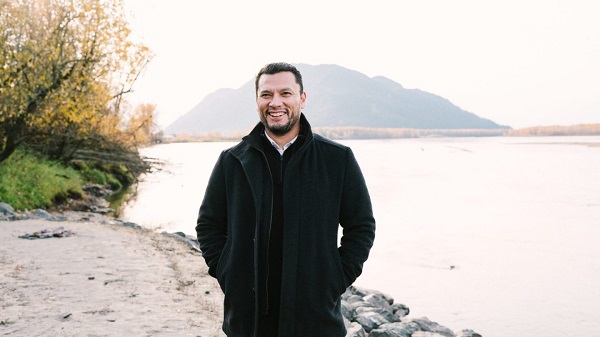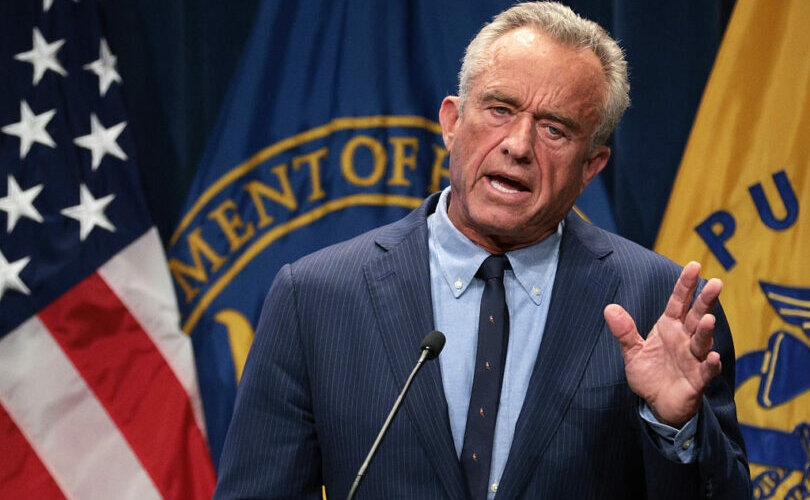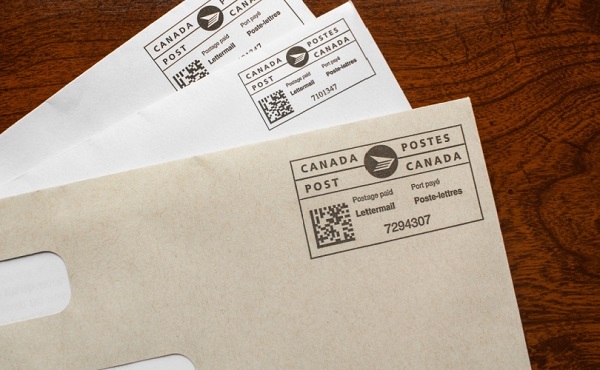Alberta
‘Let’s Find Out’ digs deep into history – onion cakes and the Edmonton Fringe Festival

A curious mind can lead you in all sorts of unexpected directions, as Chris Chang-Yen Phillips has discovered with his podcast, Let’s Find Out.

Chris Chang-Yen Phillips
He created the show in 2016 as part of his work as Edmonton’s historian laureate. He invites questions about local history and finds out the answers together with his curious correspondents.
“I’m not an expert about all things ‘local history,’ but I am curious and not afraid to ask questions,” he says. “With Let’s Find Out, I’m trying to turn that into a public good in giving people the tools to get to know their city better.”
When his term as historian laureate ended in 2018, he kept the show going, and it continues to earn accolades. The show received a silver medal at the Canadian Online Publishing Awards earlier this year, and it has been nominated for a Canadian Podcast Award in the Documentary category.
He also does live shows from time to time. The next one — Let’s Find Out: How Nature Shapes Us — will take place in Edmonton on Feb. 9, and will form the basis of the next season of the podcast.
Let’s find out a little more about the host of Let’s Find Out:
What will people get out of listening to your podcast?
A. We feature stories and characters you’ve probably never heard before. Whether you’re in the mood for a surprising look at the history of green onion cakes or a deep dive into Alberta’s past eugenics programs, we’ve got a big range of stories.
Listeners tell me all the time that because of our podcast, they now know how to offer protocol to elders, or which libraries and archives might be able to help them out down the road. And in the long run, my mission is to give people a stronger sense of ownership and belonging in this city.
What podcasts do you listen to?
A. I love listening to shows like Radiolab and HowSound because they teach me so much about the craft of good audio storytelling. I also love Terra Informa, an environmental news show based here in Edmonton, because they cover stories nobody else does. I used to help make the show, and I adore the team producing it now.
What is the most interesting comment you’ve received from a listener?
A group of archaeologists told me once that they listened to our episode A Lesson in Protocol in the car on the way to meet an Indigenous elder. The episode is about an illustrator from a settler background who makes a lot of history resources, who wanted to learn more about which food plants have been important to Indigenous peoples in this area. It was a really challenging episode to create and I ended up making one big mistake in real life: I offered tobacco at the end of our conversation with an elder, instead of at the beginning. I included my mistake in the episode, hoping it would be helpful to listeners. These archaeologists said that actually made it memorable, so they were able to pull it off correctly in their own meeting with an elder after listening! That was gratifying.
Do you have any unusual hobbies or talents that would surprise your listeners?
A. I row! And I’m also an illustrator. I’ve recently started sharing comics with the world.
If you could have any guest on your podcast, who would you choose?
A. Someone who lived in this region a few thousand years ago, because people have lived here for so long and I’m just starting to understand how humans and this land have shaped each other over the millennia. Who did they love, what stories did they tell, what were they afraid of, what were their hopes and dreams?
What has been your favourite episode so far?
A. About Green Onion Cakes, because it was such a good excuse to talk about a snack we all love and the messy and complicated history of Chinese immigration and food culture in Canada. Also because it got so many people talking about this humble food and the chef who popularized it here, Siu To.
Be sure to connect with Let’s Find Out on Facebook and Instagram.
Todayville introduces you to members of the Alberta Podcast Network each week. Click here to learn about more Alberta podcasts.
The Alberta Podcast Network, powered by ATB, is on a mission to:
- Help Alberta-based podcasters create podcasts of high quality and reach larger audiences;
- Foster connections among Alberta-based podcasters;
- Provide a powerful marketing opportunity for local businesses and organizations.
Alberta Podcast Network Ltd. is pursuing this mission with funding from ATB Financial and support from other sponsors.
Alberta
Alberta’s grand bargain with Canada includes a new pipeline to Prince Rupert

From Resource Now
Alberta renews call for West Coast oil pipeline amid shifting federal, geopolitical dynamics.
Just six months ago, talk of resurrecting some version of the Northern Gateway pipeline would have been unthinkable. But with the election of Donald Trump in the U.S. and Mark Carney in Canada, it’s now thinkable.
In fact, Alberta Premier Danielle Smith seems to be making Northern Gateway 2.0 a top priority and a condition for Alberta staying within the Canadian confederation and supporting Mark Carney’s vision of making Canada an Energy superpower. Thanks to Donald Trump threatening Canadian sovereignty and its economy, there has been a noticeable zeitgeist shift in Canada. There is growing support for the idea of leveraging Canada’s natural resources and diversifying export markets to make it less vulnerable to an unpredictable southern neighbour.
“I think the world has changed dramatically since Donald Trump got elected in November,” Smith said at a keynote address Wednesday at the Global Energy Show Canada in Calgary. “I think that’s changed the national conversation.” Smith said she has been encouraged by the tack Carney has taken since being elected Prime Minister, and hopes to see real action from Ottawa in the coming months to address what Smith said is serious encumbrances to Alberta’s oil sector, including Bill C-69, an oil and gas emissions cap and a West Coast tanker oil ban. “I’m going to give him some time to work with us and I’m going to be optimistic,” Smith said. Removing the West Coast moratorium on oil tankers would be the first step needed to building a new oil pipeline line from Alberta to Prince Rupert. “We cannot build a pipeline to the west coast if there is a tanker ban,” Smith said. The next step would be getting First Nations on board. “Indigenous peoples have been shut out of the energy economy for generations, and we are now putting them at the heart of it,” Smith said.
Alberta currently produces about 4.3 million barrels of oil per day. Had the Northern Gateway, Keystone XL and Energy East pipelines been built, Alberta could now be producing and exporting an additional 2.5 million barrels of oil per day. The original Northern Gateway Pipeline — killed outright by the Justin Trudeau government — would have terminated in Kitimat. Smith is now talking about a pipeline that would terminate in Prince Rupert. This may obviate some of the concerns that Kitimat posed with oil tankers negotiating Douglas Channel, and their potential impacts on the marine environment.
One of the biggest hurdles to a pipeline to Prince Rupert may be B.C. Premier David Eby. The B.C. NDP government has a history of opposing oil pipelines with tooth and nail. Asked in a fireside chat by Peter Mansbridge how she would get around the B.C. problem, Smith confidently said: “I’ll convince David Eby.”
“I’m sensitive to the issues that were raised before,” she added. One of those concerns was emissions. But the Alberta government and oil industry has struck a grand bargain with Ottawa: pipelines for emissions abatement through carbon capture and storage.
The industry and government propose multi-billion investments in CCUS. The Pathways Alliance project alone represents an investment of $10 to $20 billion. Smith noted that there is no economic value in pumping CO2 underground. It only becomes economically viable if the tradeoff is greater production and export capacity for Alberta oil. “If you couple it with a million-barrel-per-day pipeline, well that allows you $20 billion worth of revenue year after year,” she said. “All of a sudden a $20 billion cost to have to decarbonize, it looks a lot more attractive when you have a new source of revenue.” When asked about the Prince Rupert pipeline proposal, Eby has responded that there is currently no proponent, and that it is therefore a bridge to cross when there is actually a proposal. “I think what I’ve heard Premier Eby say is that there is no project and no proponent,” Smith said. “Well, that’s my job. There will be soon. “We’re working very hard on being able to get industry players to realize this time may be different.” “We’re working on getting a proponent and route.”
At a number of sessions during the conference, Mansbridge has repeatedly asked speakers about the Alberta secession movement, and whether it might scare off investment capital. Alberta has been using the threat of secession as a threat if Ottawa does not address some of the province’s long-standing grievances. Smith said she hopes Carney takes it seriously. “I hope the prime minister doesn’t want to test it,” Smith said during a scrum with reporters. “I take it seriously. I have never seen separatist sentiment be as high as it is now. “I’ve also seen it dissipate when Ottawa addresses the concerns Alberta has.” She added that, if Carney wants a true nation-building project to fast-track, she can’t think of a better one than a new West Coast pipeline. “I can’t imagine that there will be another project on the national list that will generate as much revenue, as much GDP, as many high paying jobs as a bitumen pipeline to the coast.”
Alberta
Albertans need clarity on prime minister’s incoherent energy policy

From the Fraser Institute
By Tegan Hill
The new government under Prime Minister Mark Carney recently delivered its throne speech, which set out the government’s priorities for the coming term. Unfortunately, on energy policy, Albertans are still waiting for clarity.
Prime Minister Carney’s position on energy policy has been confusing, to say the least. On the campaign trail, he promised to keep Trudeau’s arbitrary emissions cap for the oil and gas sector, and Bill C-69 (which opponents call the “no more pipelines act”). Then, two weeks ago, he said his government will “change things at the federal level that need to be changed in order for projects to move forward,” adding he may eventually scrap both the emissions cap and Bill C-69.
His recent cabinet appointments further muddied his government’s position. On one hand, he appointed Tim Hodgson as the new minister of Energy and Natural Resources. Hodgson has called energy “Canada’s superpower” and promised to support oil and pipelines, and fix the mistrust that’s been built up over the past decade between Alberta and Ottawa. His appointment gave hope to some that Carney may have a new approach to revitalize Canada’s oil and gas sector.
On the other hand, he appointed Julie Dabrusin as the new minister of Environment and Climate Change. Dabrusin was the parliamentary secretary to the two previous environment ministers (Jonathan Wilkinson and Steven Guilbeault) who opposed several pipeline developments and were instrumental in introducing the oil and gas emissions cap, among other measures designed to restrict traditional energy development.
To confuse matters further, Guilbeault, who remains in Carney’s cabinet albeit in a diminished role, dismissed the need for additional pipeline infrastructure less than 48 hours after Carney expressed conditional support for new pipelines.
The throne speech was an opportunity to finally provide clarity to Canadians—and specifically Albertans—about the future of Canada’s energy industry. During her first meeting with Prime Minister Carney, Premier Danielle Smith outlined Alberta’s demands, which include scrapping the emissions cap, Bill C-69 and Bill C-48, which bans most oil tankers loading or unloading anywhere on British Columbia’s north coast (Smith also wants Ottawa to support an oil pipeline to B.C.’s coast). But again, the throne speech provided no clarity on any of these items. Instead, it contained vague platitudes including promises to “identify and catalyse projects of national significance” and “enable Canada to become the world’s leading energy superpower in both clean and conventional energy.”
Until the Carney government provides a clear plan to address the roadblocks facing Canada’s energy industry, private investment will remain on the sidelines, or worse, flow to other countries. Put simply, time is up. Albertans—and Canadians—need clarity. No more flip flopping and no more platitudes.
-

 Crime2 days ago
Crime2 days agoHow Chinese State-Linked Networks Replaced the Medellín Model with Global Logistics and Political Protection
-

 Addictions2 days ago
Addictions2 days agoNew RCMP program steering opioid addicted towards treatment and recovery
-

 Aristotle Foundation2 days ago
Aristotle Foundation2 days agoWe need an immigration policy that will serve all Canadians
-

 Business2 days ago
Business2 days agoNatural gas pipeline ownership spreads across 36 First Nations in B.C.
-

 Courageous Discourse2 days ago
Courageous Discourse2 days agoHealthcare Blockbuster – RFK Jr removes all 17 members of CDC Vaccine Advisory Panel!
-

 Business20 hours ago
Business20 hours agoEU investigates major pornographic site over failure to protect children
-

 Health1 day ago
Health1 day agoRFK Jr. purges CDC vaccine panel, citing decades of ‘skewed science’
-

 Censorship Industrial Complex2 days ago
Censorship Industrial Complex2 days agoConservatives slam Liberal bill to allow police to search through Canadians’ mail


